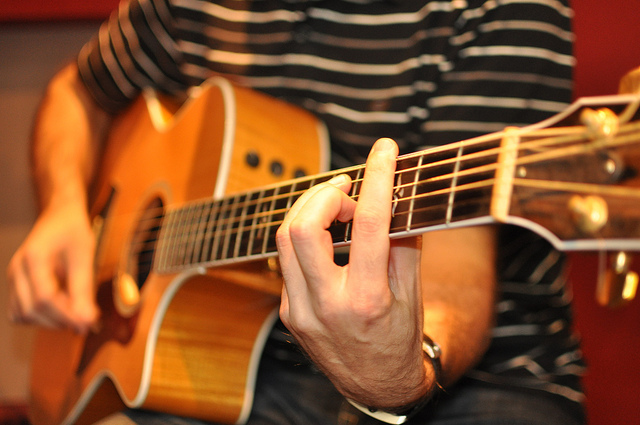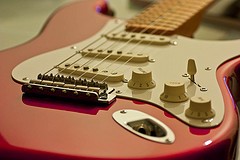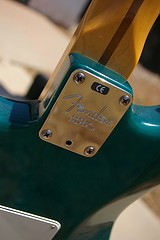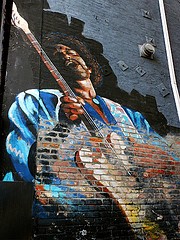Pop music has a bit of a bad reputation when it comes to music genres these days. The cheesy songs about love and heartbreak by manufactured bands have dragged down our love for pop music.
But you should remember that the word pop originates from the world popular, which means pop music doesn’t need to be tacky to be good.
In fact, many pop songs are great songs to play when you arelearning to play the guitar. Here are five great pop songs you want to know how to play.
1. Crazy by Gnarles Barkley
This song was a huge hit a few years back and it’s a wonderful song to play on the guitar. The acoustic rendition gives you plenty of room for increasing and decreasing the tempo to your liking.
You can play the song in the normal E tune.
The chords you’ll need are: Am, G, Dm, E, E7 and A. The chord changes aren’t anything too difficult, although there are a few fast ones, so you’ll need a bit of practice.
2. Rollin in the Deep by Adele
Adele’s songs are definitely a good pick for guitar practice, not only because they aren’t anything too difficult to play, but also because the tunes are most likely familiar to you. Most of the hits also make fantastic acoustic versions.
Rollin in the Deep is a good choice. The chords are simple. For the verses they are: C, G and Bb. For pre-chorus: Ab, Bb, Gm and G7. For chorus: Cm, Bb and Ab.
Now although the chords are straightforward, the rhythm is very unique. You will definitely benefit from counting while you play, especially at the start.
3.Torn by Natalie Imbruglia
This old classic from the 90s makes a lovely guitar song. You’ll definitely impress a few friends with this pick.
Once again, the chords are quite basic, but the rhythm is something you will probably need to practice. Try playing it a little slower at the start if you are having problems keeping up with the chord changes.
The chords used include: Am, Bb, C, Dm, F and Gm.
4. I’m Yours by Jason Mraz
When it comes to pop songs that are simple to play on the guitar, you just need to pick up a Jason Mraz album and you have tons of options. This singer songwriter is famous for great guitar songs, with most songs already arranged for a guitar.
I’m Yours was a big hit a few years back and if you have any weddings coming up, you can charm the couple by playing this song!
The chords used in most versions are: C, G, Am and F.
5.Price Tag by Jessie J
This pop tune from Jessie J is a quirky song to play. It makes a fun acoustic arrangement to play and you are sure to get your friends singing along if you play this.
The rhythm in Price Tag is much easier to Rollin in the Deep and even Torn, so it shouldn’t be too difficult to master.
The chords used in the acoustic version are: C, Em, Am and F.
The above pop songs will restore your faith in pop music. The songs are also fun to play on the guitar, so get practicing!





